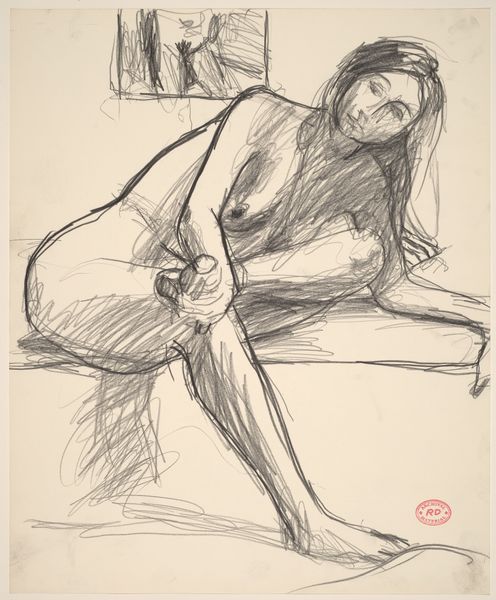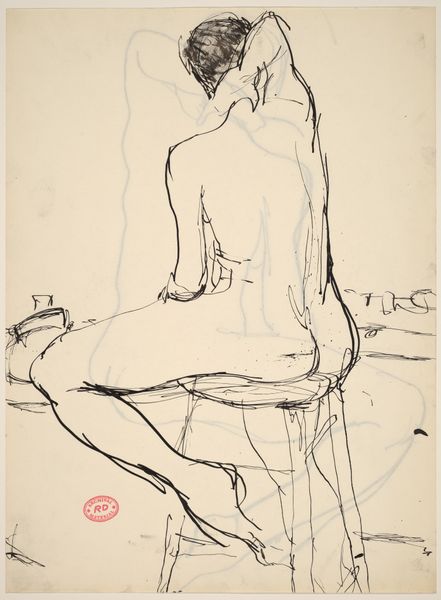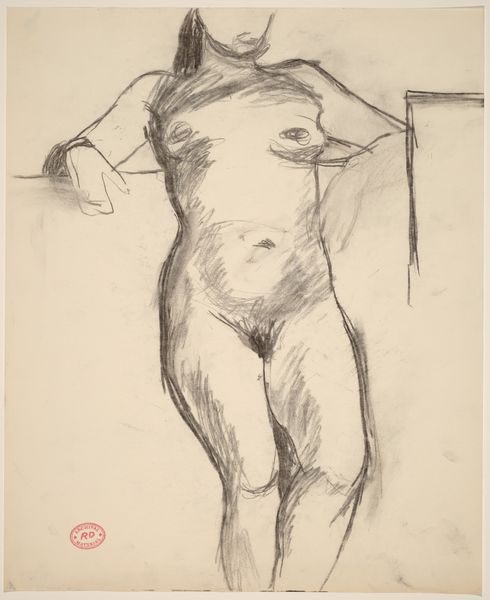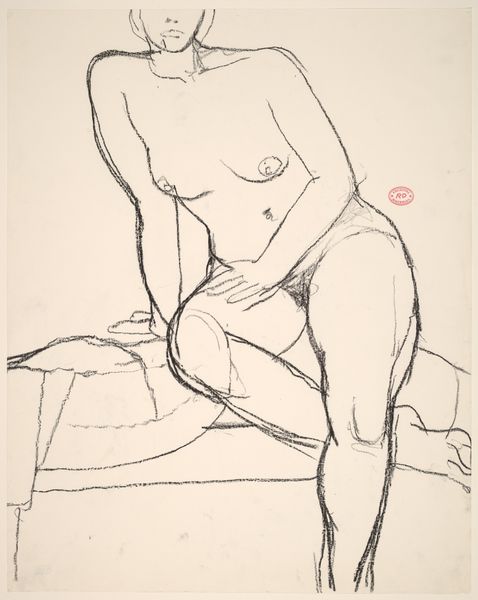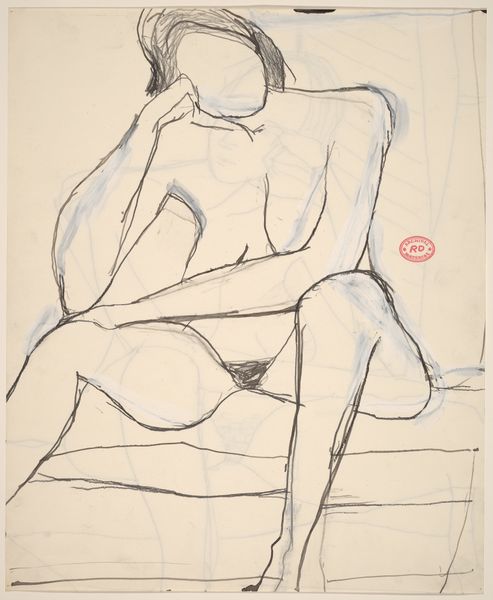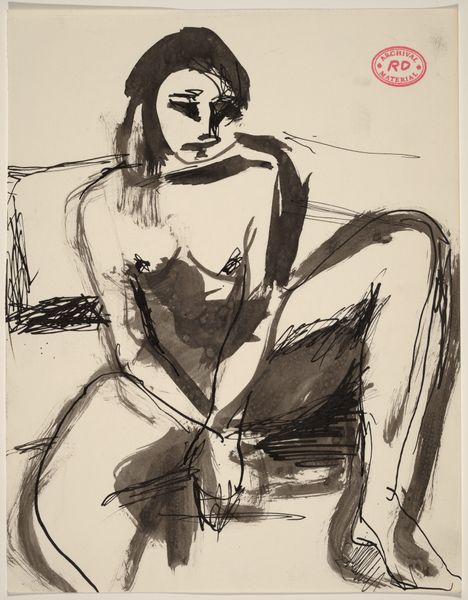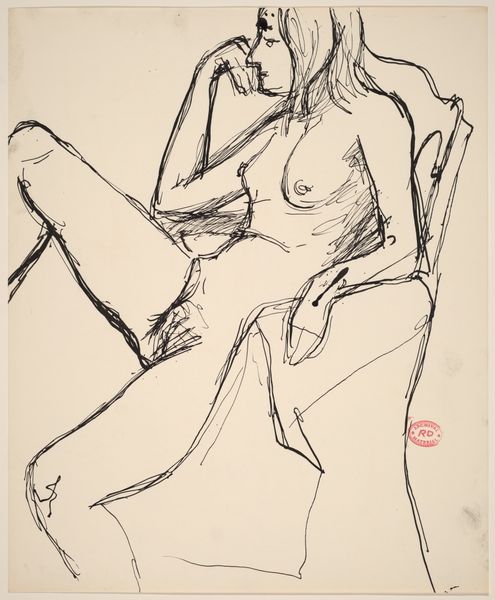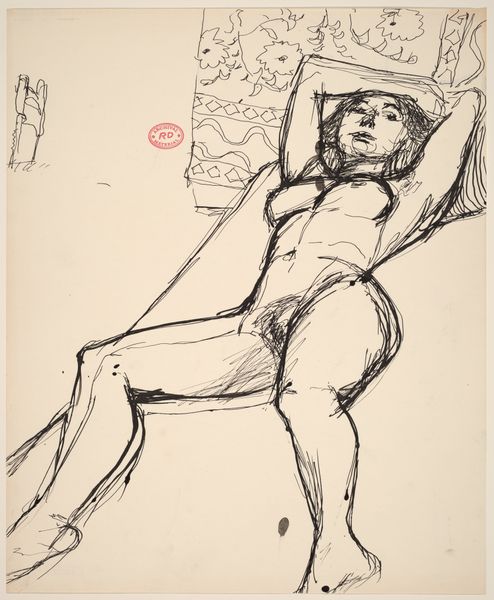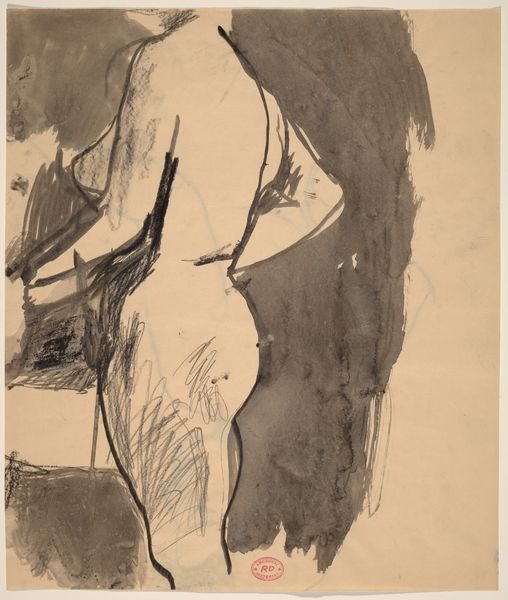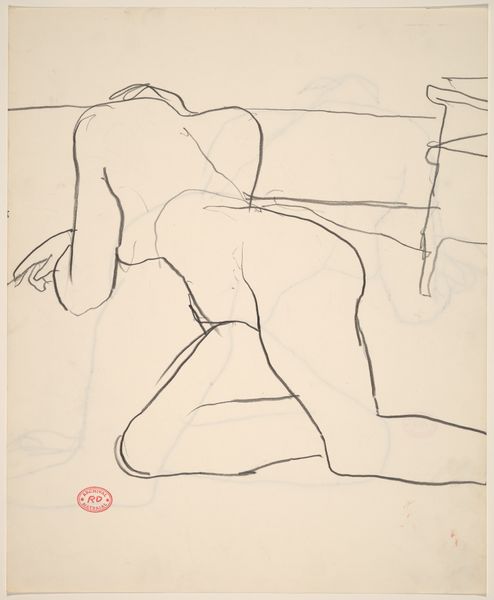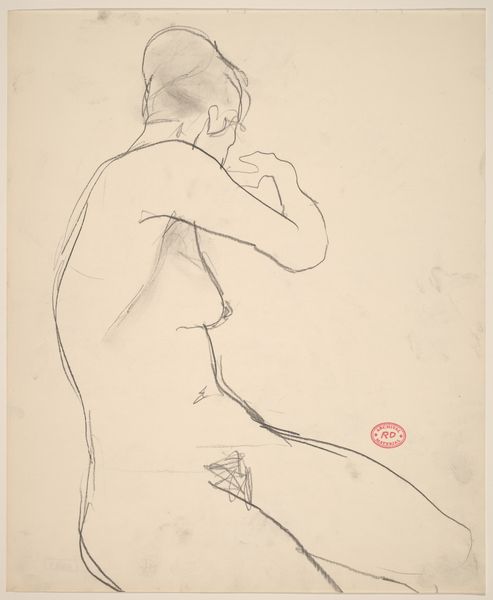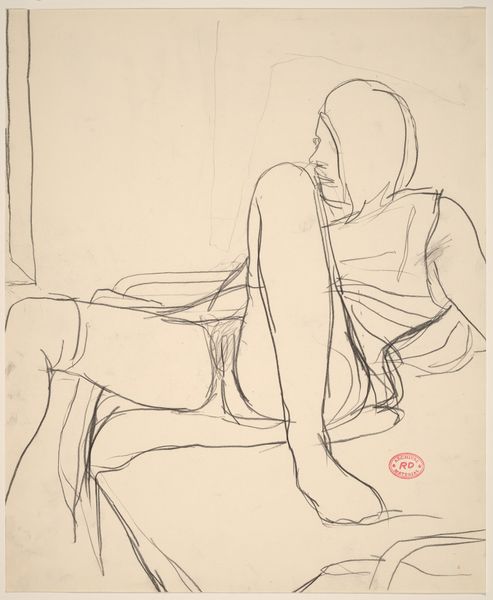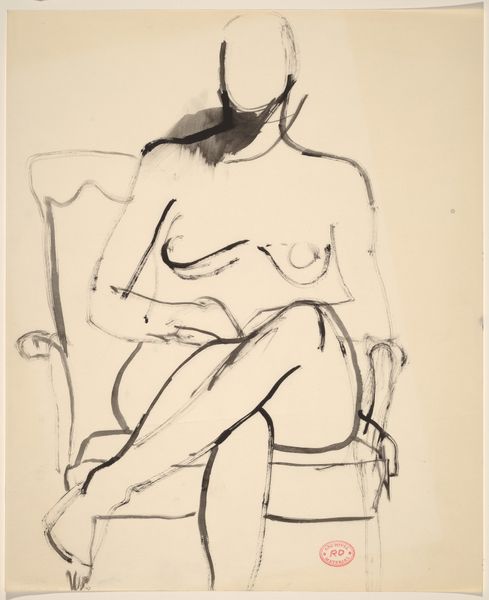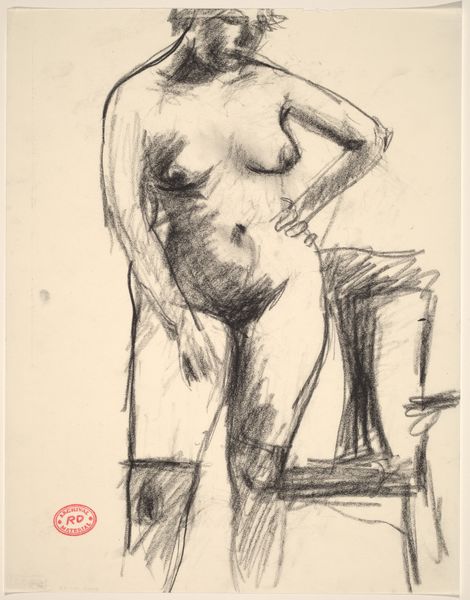![Untitled [female nude leaning against a support] by Richard Diebenkorn](/_next/image?url=https%3A%2F%2Fd2w8kbdekdi1gv.cloudfront.net%2FeyJidWNrZXQiOiAiYXJ0ZXJhLWltYWdlcy1idWNrZXQiLCAia2V5IjogImFydHdvcmtzLzc1MjIyMjljLTIxZTgtNDJkOS1hZGFmLWU2NzViNzNkODQ3Yy83NTIyMjI5Yy0yMWU4LTQyZDktYWRhZi1lNjc1YjczZDg0N2NfZnVsbC5qcGciLCAiZWRpdHMiOiB7InJlc2l6ZSI6IHsid2lkdGgiOiAxOTIwLCAiaGVpZ2h0IjogMTkyMCwgImZpdCI6ICJpbnNpZGUifX19&w=3840&q=75)
drawing, charcoal
#
abstract-expressionism
#
drawing
#
figuration
#
bay-area-figurative-movement
#
charcoal
#
nude
Dimensions: overall: 43.2 x 35.6 cm (17 x 14 in.)
Copyright: National Gallery of Art: CC0 1.0
Curator: Standing before us is an untitled charcoal drawing by Richard Diebenkorn, completed in 1967. The subject is a female nude leaning against a support, seemingly lost in thought. Editor: My first impression is one of subdued intimacy. The limited palette and the unfinished quality give it a raw, almost vulnerable feel. The woman seems withdrawn, pensive even. Curator: The piece emerges from a fascinating period in Diebenkorn’s career. Though most renowned for his abstract Ocean Park series, he consistently returned to figuration throughout his artistic life. The figure offered him a different avenue to explore composition, form and, interestingly, the representation of space. He uses the abstract-expressionist style within the piece to communicate the subject. Editor: It's interesting how the charcoal marks, particularly around the figure's contours, blur the lines between abstraction and representation. There's a tension there; the body is clearly defined, yet also dissolving into the surrounding space. I wonder what that positioning communicates about Diebenkorn's attitude towards this model. I do note how there appears to be a disinterest in showing the woman’s face. Curator: One reading might position this in relation to broader socio-political shifts occurring at the time. The late 60s was an era of significant upheaval; perhaps Diebenkorn’s interest in the body as form echoes evolving understandings of the self in response to social and political tensions. Do you get any sense about the class of the subject? Editor: The setting, devoid of ornate detail, suggests an every-woman depiction; an attempt to communicate female existence through this medium. It also prompts reflection about representation, the artist's gaze, and the power dynamics inherent in such depictions, in general, but also here in this work. Curator: And the institutional aspect cannot be ignored. The work’s existence in museum archives positions it within a very specific historical context. Whose stories are told, whose bodies are represented, and who controls that narrative? Diebenkorn has something very clearly to say in a way which might speak about or towards gender and identity. Editor: Ultimately, this drawing resonates because it captures a moment of private reflection. The incomplete rendering allows space for us, as viewers, to project our own experiences, biases and perhaps our anxieties onto the figure. Curator: Indeed, and by examining it within a social and artistic context, it prompts us to confront those very projections and to question the way in which art contributes to broader cultural conversations.
Comments
No comments
Be the first to comment and join the conversation on the ultimate creative platform.
